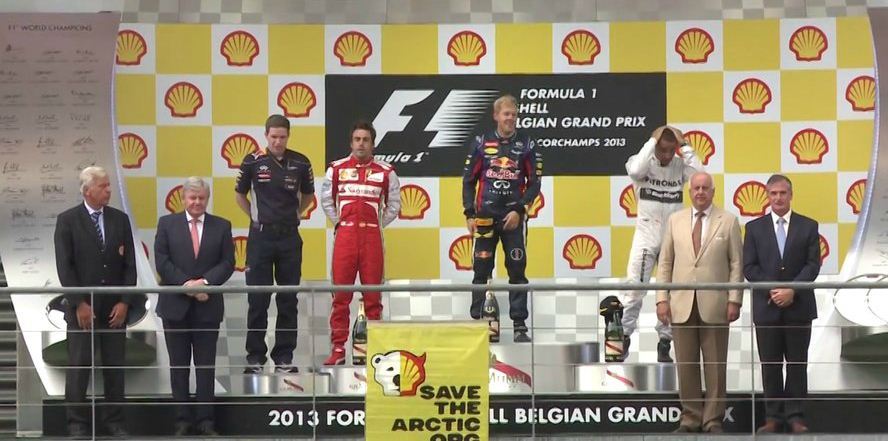
YouTube Censors Anti-Oil Videos
YouTube’s reputation as a bastion of internet freedom has taken a battering over the last few days as it has twice censored anti-oil videos.
 YouTube’s reputation as a bastion of internet freedom has taken a battering over the last few days as it has twice censored anti-oil videos.
YouTube’s reputation as a bastion of internet freedom has taken a battering over the last few days as it has twice censored anti-oil videos.
The website, which is owned by Google, argues it “provides a forum for people to connect, inform, and inspire others across the globe and acts as a distribution platform for original content creators and advertisers large and small.”
But that distribution platform only goes so far as activists and film makers have recently found out.
On Monday, activists from Greenpeace did what Greenpeace does best: an innovative, cheeky low-cost protest with a big impact.
They activated remote-controlled ‘Save the Arctic’ banners on the winners’ podium of the Belgian Grand Prix, just as the winners were due to receive their prizes.
As tens of millions looked on two banners slowly unfurled themselves. Although the film of the protest was originally posted to YouTube, it was subsequently removed after Shell and Formula One complained, leading the campaigners to repost it elsewhere online.
You can watch it here or here.
Shell should know from previous bully-boy antics that the more you try and silence people the more it backfires. The fact that the video has been taken down only makes more people want to watch it.
This is not the only anti-oil video pulled from YouTube in the last week. The American comedian cum satirist Andy Cobb and director Mike Damanskis recently decided to make a film about the ecological impact of the dirty tar sands in Canada.
They launched an Indiegogo campaign to raise money for the film, which is called “Fort McMoney – Remember to Breathe” asking for a minimum $20,000 to make the film happen.
The film title was a merging of two puns: Calling Fort McMurray, the Albertan tar sands capital by its nick-name Fort McMoney and using a slogan from Alberta Tourism, whose strap-line is ironically “Remember to Breathe.”
The trailer contrasted Alberta Tourism’s clean images of the state with images of the devastating impact of the tar sands.
Not surprisingly Alberta Tourism was not happy. The tourist agency asked for the trailer to be pulled down, claiming the video used copyright footage. YouTube has since removed the trailer. But you can watch it here.
But just like the Shell video, censorship is not that easy. Cobb and Damanskis have posted the video to Vimeo, and the story has made headlines in the Edmonton Journal and Calgary Herald and on two articles on the Huffington Post, amongst other stories online.
And ironically, all this attention means that Cobb and Damanskis have reached the $20,000 goal.
Damanskis and Cobb have also lodged a counter-claim with YouTube. Damanskis said Travel Alberta’s actions amount to “intimidation”.
So the moral of the story is that the more Big oil and its allies try to close things down, the more this back-fires.
